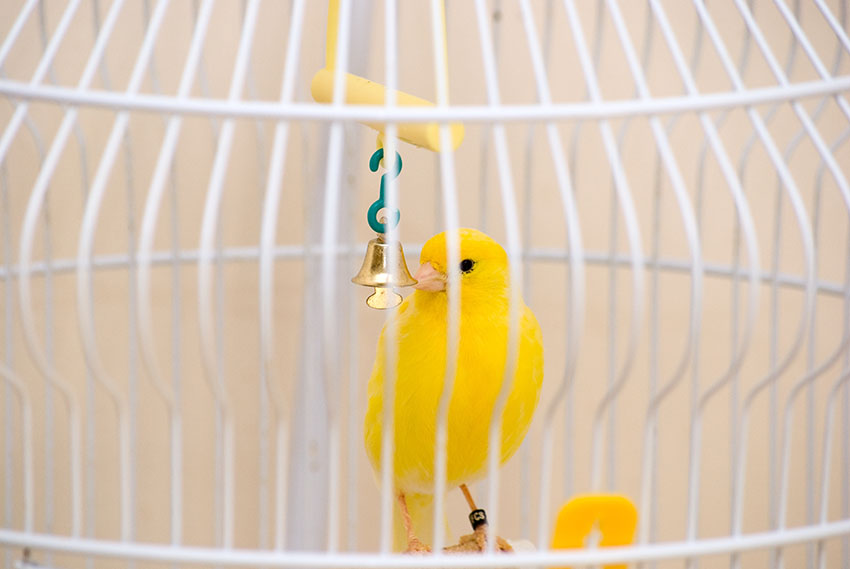Although finches do not need toys in the same way as a Budgie, Cockatiel or any other member of the highly intelligent parrot family, they still enjoy the stimulation of exploring objects in their cages. There are many items available in pet shops, but most of the ‘toys’ can be sourced in the wild, or made at home.
Branches. Using the list of safe woods given in the Safe Wood for Bird Perches section above, pick branches that have leaves or buds on. These can be of any size, the only limitations being the size of your cage - i.e. make sure the branch does not block the birds’ flight path. The wood needs to be thoroughly cleaned, and a dousing in boiling water is a good idea, to kill any potentially harmful bacteria. Dry the wood in a cool oven before introducing into the cage. The finches will enjoy perching and probing, and nibbling at the bark and shoots.
Other types of perch. Birds explore with their beaks and feet, so a perch made from a length of rope (tightly wound - nothing they could snag a toenail in), a plastic ring, or a chain of wooden or plastic rings will add to the variety of the cage.

A well-equipped cage = a happy a bird
Pine cones. These are great additions to a bird cage, but with some important provisos:
- They must be freshly fallen, rather than last year’s old, moss-covered ones.
- Their stalk end should be trimmed away, with no trace of sticky pine resin left.
- To check for resin, put the cones in a warm oven for 10 minutes. If resin bubbles out, don’t put the cone in the cage.
- The cones need to come from tree species known to be safe for finches. Suitable common trees include cedar, Douglas fir, larch, Norway spruce, silver fir, Scots pine, and the non-conifer species alder and birch, which have sprays of small cones.
- Suspend the cones from the top bars using string, or scatter them on the bottom of the cage.
Lattice balls. You can buy these in pet shops, made from plastic or twigs, or you can fashion one yourself from safe wood twigs. The lattices should be the size of ping-pong balls, and you can put food inside to entice your birds.
Swings. All finches enjoy swings, and a homemade one created from rough wood and rope ties is perfect.
Bells. Finches are not as prone to bell-addiction as budgies, but they still enjoy exploring them with their beaks, and appear to take pleasure in the sound they make. Bells should be solid-bodied with a single opening, rather than the ‘jingle-bell’ type bells, in which a bird may be unlucky and snag a toe.

Canaries enjoy playing with bells
Ropes. More synonymous with parrots, ropes are also very stimulating for pet finches. They should be tight-wound, to avoid toe-snagging, and hung in loose loops in the cage. Finches will use them as a trapeze, even hanging upside down to explore (a feat you can encourage by attaching seeds or other treats to the ropes).
Nesting material (sometimes referred to as ‘charpie’). Whether or not your hen birds will be mating and laying eggs, they will have a strong instinct to collect suitable nesting materials. If you put leaves, moss or bits of paper in the cage, they will spend hours rifling through the stuff and collecting their favourite bits. If there’s nowhere in the cage for the hen to actually build a nest, though, don’t frustrate her by supplying nesting material.




Comments
David, 8 August 2020
Thanks for all these intresting facts
Beryl, 28 April 2020
I had two canaries a few years ago and now I'm not a cat owner nor will I be in the future I am looking to have get myself a canary a singing canary, I've loved looking through your very informative pages and I hope it's okay for me to print your pages off I've found it to be very good advice on everything Thank You